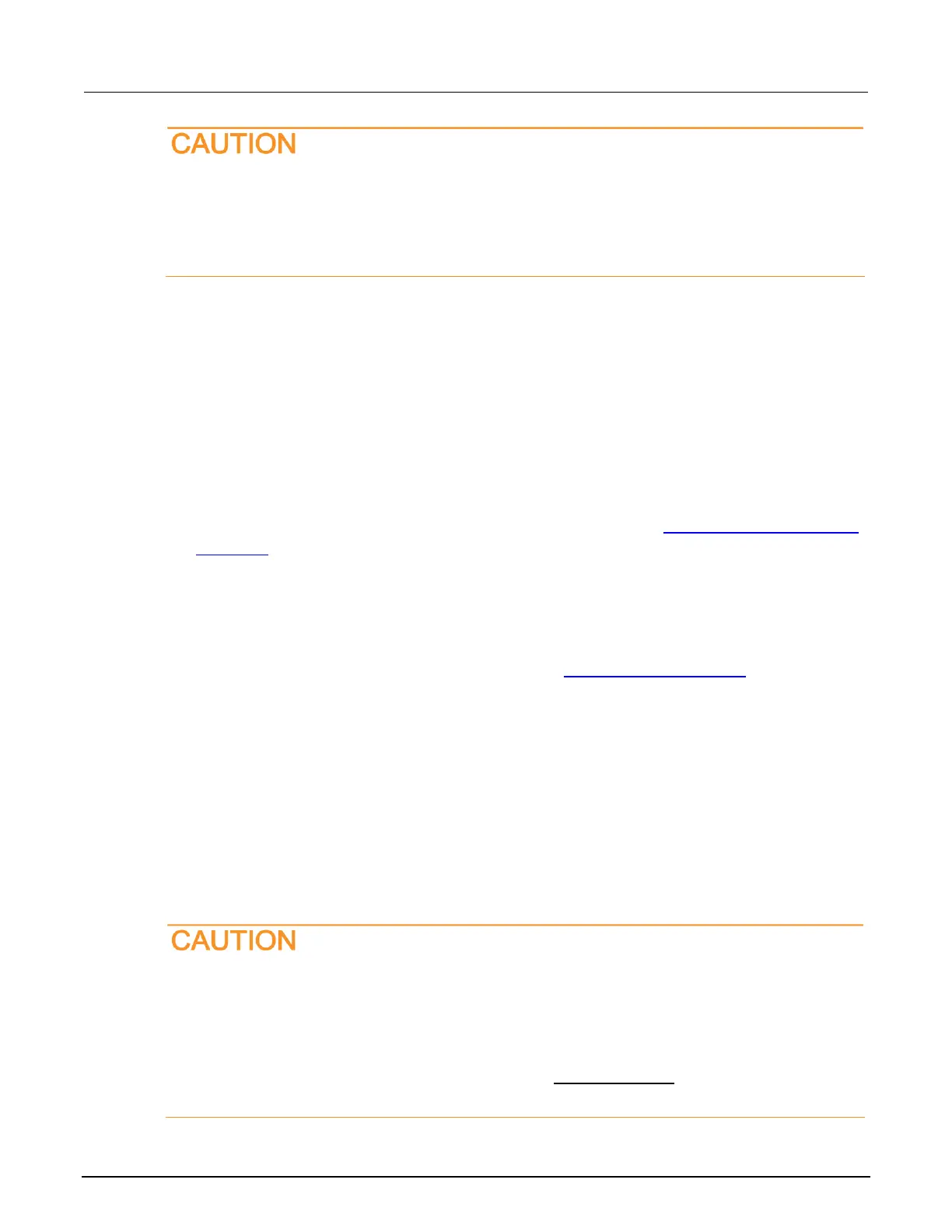Model 2601B-PULSE System SourceMeter Instrument Reference Manual Section 10: Instrument programming
2601B-PULSE-901-01A April 2020 10-45
If the instrument encounters memory allocation errors when the memory used is above 95
percent, the state of the instrument cannot be guaranteed. After attempting to save any
important data, turn off power to the instrument and turn it back on to reset the runtime
environment and return the instrument to a known state. Unsaved scripts and data in reading
buffers will be lost.
The amount of memory in use can be checked using the meminfo() function. The first value
returned by meminfo() is the number of kilobytes of memory in use.
If the amount of memory used is over 95 percent, or if you receive out-of-memory errors, you should
reduce the amount of memory that is used.
Some suggestions for increasing the available memory:
• Turn the instrument off and on. This deletes scripts that have not been saved and reloads only
scripts that have been stored in nonvolatile memory.
• Remove unneeded scripts from nonvolatile memory. Scripts are loaded from nonvolatile memory
into the runtime environment when the instrument is turned on. See Delete user scripts from the
instrument (on page 10-43).
• Reduce the number of TSP-Link
®
nodes.
• Delete unneeded global variables from the runtime environment by setting them to nil.
• Set the source attribute of all scripts to nil.
• Adjust the collectgarbage() settings in Lua. See Lua memory management (on page 10-27)
for more information.
• Review scripts to optimize their memory usage. In particular, you can see memory gains by
changing string concatenation lines into a Lua table of string entries. You can then use the
table.concat() function to create the final string concatenation.
TSP-Link system expansion interface
The TSP-Link
®
expansion interface allows the 2601B-PULSE instrument to communicate with other
Test Script Processor (TSP
®
) enabled instruments. The test system can be expanded to include up to
32 TSP-Link enabled instruments.
Combining two modules to achieve greater currents in both source voltage and source
current applications requires specific precautions, including configuration settings. Make
sure that you adequately understand the risks involved and the measures needed to
accommodate the combination of two modules. To prevent damage to the 2601B-PULSE,
connected instruments, and the device under test, make sure proper procedures are used.
For further information, visit the Keithley website at tek.com/keithley for application notes on
combining channels from two modules.

